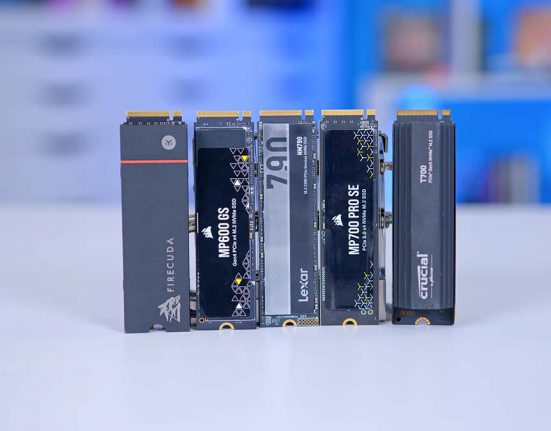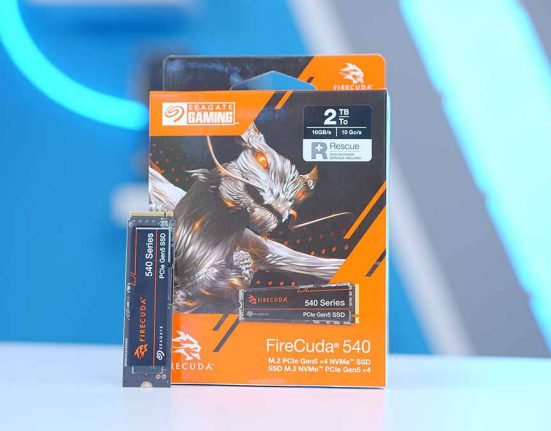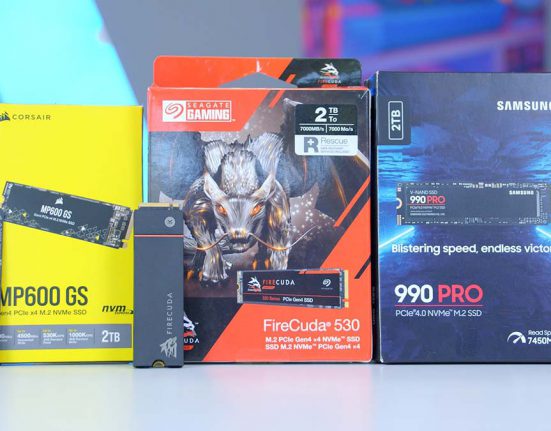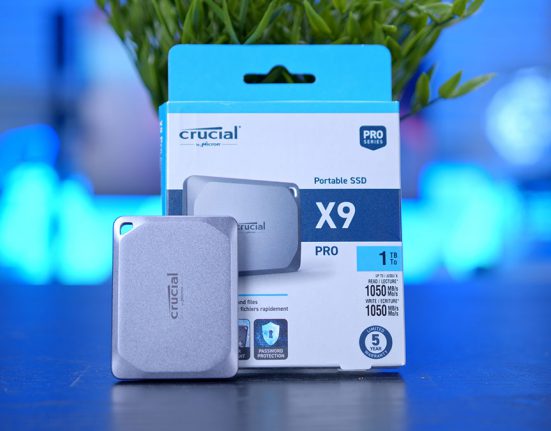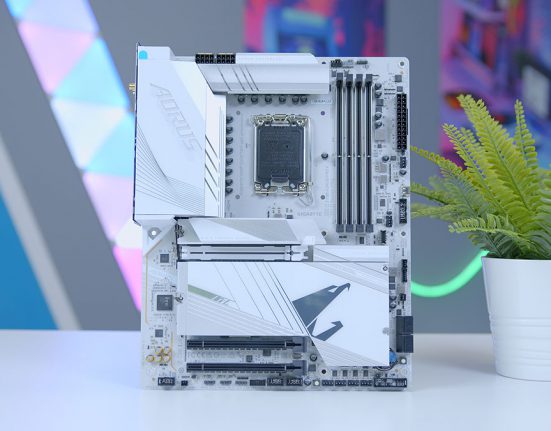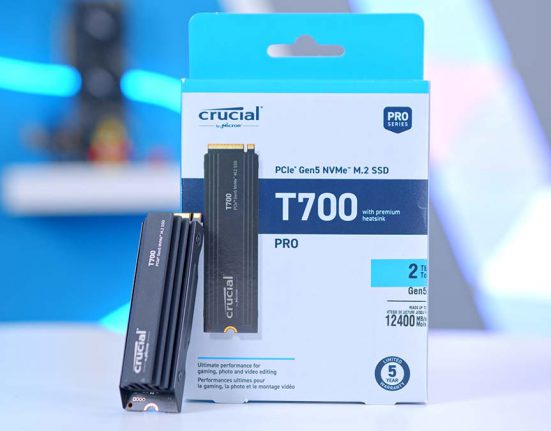The Seagate Firecuda 530 is one of the fastest drives in the Gen4 SSD space. Surpassing almost every other drive on the market, the Firecuda 530 has been the go-to option for high-end PC builds. However, Seagate has superseded its top dog drive with the revival of the Firecuda 530, known as the Firecuda 530R. This Gen4 SSD offers read speeds over 7000MB/s and writes up to 6800MB/s, placing it at the top of the Gen4 NVMe stack. Naturally, we are curious to see if Seagate’s claims are valid, so we’ve put the Firecuda 530R through the wringer, benchmarking its speeds and thermals to assess its overall performance.
While the market has shifted its focus to Gen5 storage, with new products constantly hitting the shelves, PCI-E 4.0 storage remains incredibly popular due to its competitive pricing. That’s why the arrival of a top performer is an exciting proposition for those looking to secure high-speed storage that doesn’t cost the earth. However, the proof is in the pudding, and the only way to determine if the Firecuda 530R is as good as Seagate claims, is with a comparison against other existing Gen4 drives.
In this SSD review of the Seagate Firecuda 530R, we’ll examine the drive specifications, design and aesthetics, thermals, and, most importantly, read and write performance.
Buy the Seagate Firecuda 530R on:
Specification
Regarding the specs, the Seagate Firecuda 530R is a Gen4 NVMe M.2 SSD that uses the full four PCI-E lanes, compared to a drive like the Samsung 990 EVO, which only uses two. Because of this, the four full PCI-E lanes allow the Firecuda 530R to reach read speeds up to 7400MB/s. The writes differ based on the capacity of the drive you’ve picked. The 1TB version offers the most robust write performance of 7000MB/s, while 2TB and 4TB are restricted to 6900MB/s and 6800MB/s, respectively. The write speeds are similar to the original Firecuda 530, but the 4TB capacity is 100MB/s weaker.
Compared to other Gen4 SSDs on the market, the Firecuda 530 is one of the more impressive Gen4 drives. Its main competitors are the Samsung 990 Pro, Lexar NM790, and the SK Hynix Platinum P41. However, the Firecuda 530R is a definitive winner based on these specs alone.
| Specification | Seagate Firecuda 530R |
|---|---|
| PCI-E Generation | Gen4 |
| Capacity | 1TB 2TB 4TB |
| Sequential Read Speed | 7400MB/s |
| Sequential Write Speed | 1TB: 7000MB/s 2TB: 6900MB/s 4TB: 6800MB/s |
| Warranty | 5 years |
| Endurance | 1TB: 1100TBW 2TB: 2400TBW 4TB: 5050TBW |
| Form Factor | M.2 2280 |
The Firecuda 530R has three capacity variants: 1TB, 2TB, and 4TB. This is one less than the original Firecuda 530, which offered an additional 500GB version that sustained considerably lower speeds.
Impressively, the Firecuda 530R has robust endurance ratings. The 1TB version has a TBW (terabytes written) rating of 1275TBW, jumping to 2550TBW at 2TB and 5100TBW at 4TB. Seagate drives have generally had good tolerances, but these blow the competition out of the water. As a point of comparison, the Samsung 990 Pro caps out at 600TBW and 1200TBW on the 1TB and 2TB versions. This drive also has a five-year warranty as standard, with plenty of room to leverage a return of RMA should the drive fail.
On the pricing front, the Firecuda 530R comes in at $129.99 for the non-heatsink 2TB drive, increasing to $468 for 4TB of capacity. I think the price of this drive is pretty fair. You’re paying a premium for the performance, and the same applies to other enthusiast-level SSDs like the 990 Pro or NM790. Still, the Firecuda 530R isn’t incredibly far from being highly competitive. The only caveat is that this price is for the non-heatsink version, so thermals will be weaker, which will be a deal-breaker for some.
Seagate Firecuda 530R Design
Unsurprisingly, the design and aesthetic of this drive are nothing to get excited about. While many NVMe SSDs on the market may look futuristic or sleek, this is not one of them—and it’s not designed to be. There isn’t any RGB lighting, fans, or visible wiring. This is quite simply an M.2 drive.
As expected, the Firecuda 530R uses the 2280 form factor, which is standard across most modern drives. This size is generally better supported and will fit into a Z890 or X870E motherboard without issue.

On top of the drive, you’ll find a small label covering the flash chips, designed to dissipate heat better. The label covers a large surface area of the SSD, so its spread assists in keeping temperatures down. As I alluded to earlier, Seagate offers a heatsink version, much like they did with the original 530, which will further help thermals.
It’s worth highlighting that while this drive doesn’t come with a heatsink, prospective buyers are advised to place it underneath a motherboard heatsink to avoid any potential throttling. While Gen4 drives generally don’t suffer from the same thermal issues as Gen5 SSDs, they still run at exceptional speeds and will throttle if temperatures are too high.
Gen4 SSDs – Do Games Need High-Speed Drives?
One of the big questions we’ve asked recently is whether there is a noticeable difference in performance between SSD generations. Our article covering the MP700 Elite briefly dived into the performance differences between Gen4 and Gen5 SSDs and found that this was negligible. With this in mind, what does this mean for Gen4 SSDs and gaming? Are Gen4 drives even necessary?
Unfortunately, the answer is somewhat complex. While technologies have been integrated into modern titles, namely the DirectStorage API, to accommodate fast drives, the issue stems from the advancements made for data speeds. Before the release of NVMe SSDs, SATA drives were limited to around 600MB/s, but new drives far surpass this, reaching 12-15GB/s, significantly outpacing modern game engines. The result is that most new titles cannot utilise the full capability of these drives.

It isn’t all doom and gloom, however. A handful of titles use DirectStorage, which pulls assets from storage using the high bandwidth of NVMe drives. Games like Ratchet & Clank: Rift Apart and Star Wars Outlaws benefit from these, decreasing load times significantly, which means titles will feel smoother when transitioning from different scenes or just booting up games.
To bring us back to the main question that we’ve asked, does this mean you need a Gen4 SSD to enjoy quick load times? The answer currently is no, but you will in the future. There are about 20 games that use DirectStorage, and this will only increase as more games are developed and better engines hit the shelves. But for now, Gen4 and even Gen5 drives aren’t necessary to enjoy modern titles, so picking up an affordable drive that suits your use case is generally the best course of action.
Thermals
To gauge the Firecuda 530R’s temperatures, we ran CrystalDiskMark and HWMonitor to record temperatures. CrystalDiskMark is a storage benchmarking application that applies an artificial load to a drive of your choice. Once the benchmarking run has finished, it will return read and write speeds. HWMonitor provides real-time data on utilisation, power consumption, and, most importantly, temperatures, allowing us to determine how the drive performs under a sustained workload.
On average, the Seagate Firecuda 530R offered around 49°C. There were a few instances where the Firecuda 530R jumped up to 51°C, but it would drop back to 49°C after a few seconds during 100% utilisation. The temperatures here are pretty decent. As I mentioned earlier, most gamers Gen4 NVMe drives don’t struggle thermally, so the motherboard heatsink is sufficient to keep it cool.

The main takeaway here is that it’s great to see no thermal throttling. High-performance drives push through a fair amount of power to sustain the fast read and write speeds, so it’s no wonder some SSDs struggle to maintain decent temperatures.
Performance
To find out if Seagate’s claims about this Gen4 drive’s chart-topping performance are accurate, we fired up CrystalDiskMark and let the application run. After five minutes, it returned readings conducted when the drive was in various performance stages. On average, the Firecuda 530R offered 7357MB/s on the reads and 6801MB/s on the writes.

This places the Firecuda 530R just below the Lexar NM790, losing out by 30MB/s on the reads. But overall, the Firecuda 530R is the better of the two, surpassing the NM790 by well over 150MB/s on the writes. Seagate yet again reigns supreme in the Gen4 market, beating out almost every alternative, including SK Hynix, Samsung and Corsair.
Overall, the Firecuda 530R is a clear winner based on the performance metrics alone. Based on our testing, Seagate’s advertised readings are accurate, and prospective buyers are definitely getting what they’re paying for.
Conclusion
Seagate Firecuda 530R

Product Name: Firecuda 530R
Brand: Seagate
-
Design
-
Thermals
-
Performance
-
Value For Money
Summary
Seagate yet again demonstrates why it is the top dog in terms of storage. The Firecuda 530R is a chart-topping Gen4 NVMe SSD, offering performance that surpasses the previous king, the Firecuda 530. Seagate has beaten out its own drive, offering read and write speeds around the 7000MB/s mark. Regarding thermals, the Firecuda 530R is a solid performer and doesn’t succumb to throttling even during 100% utilisation, which is reasonably impressive. And the non-heatsink version is relatively price competitive compared to the heatsink variant, saving you some money.
For many builders, the most significant caveat of this drive is whether it’s worth picking up versus better-priced options. As discussed earlier in the article, read and write speeds don’t massively affect gaming performance, so this drive is primarily geared towards enthusiasts. However, there comes a time when spending $30-$50 more may not be worth the few extra seconds you’ll gain, reducing export times or moving files. For this reason, for many builders, it will be worth sticking to a drive that suits your use case and budget, instead of picking up a drive with the best speeds. The Firecuda 530R is still a top-end Gen4 SSD that we’d recommend, but be aware that it likely won’t affect general performance by a considerable margin.
Pros
✅ Excellent speeds
✅ Solid durability rating
✅ Great thermals
Cons
❌ Barebones design
❌ Pricey
❌ No 500GB version



